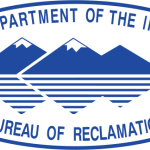- Branche: Government
- Number of terms: 15655
- Number of blossaries: 0
- Company Profile:
A U.S. Department of the Interior agency that oversees water resource management incuding the oversight and operation of numerous diversion, delivery, and storage projects the agency has built throughout the western United States for irrigation, water supply, and attendant hydroelectric power ...
Irrigable land now receiving, or to receive, an additional or reregulated supply of water through facilities constructed by or to be constructed by the Bureau of Reclamation. This water together with that obtained from nonproject sources, generally will constitute an adequate supply.
Industry:Engineering
A fault which, because of its present tectonic setting, can undergo movement from time to time in the immediate geologic future. A fault, which has moved during the recent geologic past (Quarternary) and, thus, may move again. It may or may not generate earthquakes. See capable fault.
Industry:Engineering
The location of facility where responsible officials gather during an emergency to direct and coordinate emergency operations, to communicate with other jurisdictions and with field emergency forces, and to formulate protective action decisions and recommendations during an emergency.
Industry:Engineering
The water in the natural stream immediately downstream from a dam. The elevation of water varies with discharge from the reservoir. Applied irrigation water that runs off the lower end of a field. Tailwater is measured as the average depth of runoff water, expressed in inches or feet.
Industry:Engineering
A projection that uses the interpretation of various observational, numerical, and objective aids to estimate the amount, location, and duration of precipitation. The precipitation forecasts are used as a decision making tool for flood warning systems in basins subject to flash floods.
Industry:Engineering
Sediments or other unconsolidated accumulations of solid particles produced by the physical and chemical disintegration of rocks, and which may or may not contain organic matter. Soil components may consist of clay, silt, sand, or gravel. The loose surface material of the earth's crust.
Industry:Engineering
A stream which flows part of the time, usually after rainstorm, during wet weather, or for only part of the year. Also referred to as an ephemeral stream. Stream on or in contact with the ground water table that flows only at certain times of the year when the ground water table is high.
Industry:Engineering
A stream which flows part of the time, usually after rainstorm, during wet weather, or for only part of the year. Also referred to as an ephemeral stream. Stream on or in contact with the ground water table that flows only at certain times of the year when the ground water table is high.
Industry:Engineering
The measure of the flow of water through soil. The ease (or measurable rate) with which gasses, liquids, or plant roots penetrate or pass through a layer of soil or porous media. The capacity or ability of a porous rock, sediment, or soil to allow the movement of water through its pores.
Industry:Engineering
A series of hydrometeorological reports published by the National Weather Service (NWS) addressing meteorological issues related mainly to developing estimates of probable maximum precipitation used in the determination of the probable maximum flood for design of water control structures.
Industry:Engineering
